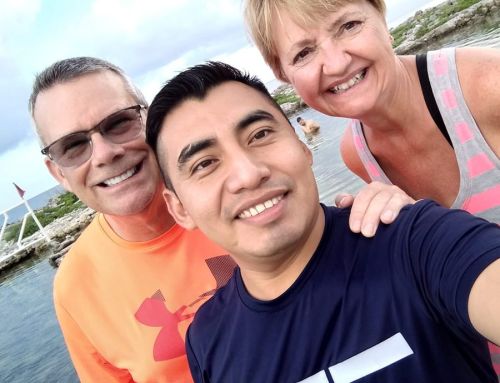By Akers Editorial
House Sharing — Niche group community and more
The baby boomer generation has gained quite a reputation for continually challenging and redefining the status quo. More than 75 million strong, many are facing retirement, and they once again are pushing the envelope—this time on how and where they live the remainder of their lives.
Every day, nearly 10,000 people turn 65 years old, and that trend will continue for the next 19 years. No wonder many baby boomers, after reading the writing on the wall, cringe at the limited number of lifestyle choices available for seniors and choose to take charge of their own destinies and forge into uncharted waters.
Unique solutions are continually being created to answer questions like, “How can I delay moving into an assisted living or nursing facility?” “How can I find and live in close proximity to other retirees with similar backgrounds and interests?” “How can I continue to afford to live in my own home, remain independent and still be valuable to my community?”
Boomers are throwing old retirement living stereotypes out the door by creating, implementing and documenting new senior lifestyle models. And, because of technology, they’re sharing their discoveries—successes and failures—with other seniors through books, websites, blogs, newsletters and networking organizations.
Other seniors are tweaking and fine-tuning those models to better fit their own needs and desires based on income, interest, demographics, geography and ethnic and professional backgrounds.
Old adages like, “birds of a feather flock together,” tend to run true when it comes to some boomer preferences. Living in close to other like-minded individuals is becoming increasingly popular, and as a result, niche or affinity communities are cropping up across the nation.
Segregation in Florida
The first community exclusively for first-generation immigrant retirees of Indian descent is in nearby Tavares.
ShantiNiketan (Abode of Peace) was established to meet specific needs of Indian retirees, including availability of native food, Hindu prayer rooms and close proximity to friends and neighbors who can speak their native language. Similar communities are being planned in other locations around the country to meet growing demand.
Another niche retirement community is located in Polk County, between Tampa and Vero Beach. Nalcrest was established for retired members of The National Association of Letter Carriers who enjoy socializing and living close to fellow retirees with similar professional backgrounds.
“(Seniors) can get very creative about how they want to live in contrast to how their parents grew old.” – Beth Baker, Author of “Old Age in a New Age” and “With a Little Help from Our Friends- Creating Community As We Grow Older.”
A third community in Florida caters to retirees who simply idolize their toys. Lake Weir Preserve residents share their love of ATVs, RVs, motorcycles, boats and other vehicles with special storage requirements.
Other unique niche communities include the Chiefland Astronomy Village in Chiefland, Burbank Senior Artists’ Colony in California and a Summertown, Tennessee community for aging hippies.
What about veterans? Are there any options available specifically for them? Yes. “There’s a VA housing program called the Medical Foster Home Program,” Beth said. She also mentioned a Veterans Affairs housing program called the Medical Foster Home Program. According to the VA website, a private home with trained caregivers serves as an alternative to living in a nursing home. That service is available in the tri-county area. For more information, email VA contact Joyce Feagle at joyce.feagle@va.gov.
Villages Model, no not that Villages
Relocating isn’t for everyone. What if you prefer staying in the old neighborhood, but find it increasingly difficult to maintain your homes and independence?
“We don’t often recognize how we could perhaps prevent some of our problems through the power of strong social connections,” said Beth Baker, author of several books on aging and frequent contributor to AARP Bulletin, The Washington Post and other widely-read publications. “The underlying theme of both my books is how important relationships and community are to our health, well-being and happiness. I think that has been under recognized by the medical establishment and by people in general.”
In a recent telephone interview with Style, Beth said there are several viable models in place that can help prolong a senior’s stay in their own home. One of the most popular models is called The Villages Model, which is not to be confused with The Villages, Florida.
The Villages Model (TVM) refers to an aging in community. “It’s for people who want to age in place in their longtime neighborhood. It’s for people who want to stay put and don’t want to move,” Beth said.
A TVM can provide key volunteer and professional contact information for those needing assistance in the areas of transportation, which is one of the most popular services requested; social interaction (visiting housebound seniors); home maintenance assistance, etc.
“There’s a pool of volunteers who are often TVM members themselves—they could be younger people who have agreed to be called upon to provide a service,” Beth continued. “TVM also provides social support.”
Some TVMs are more structured than others. The more formal ones become nonprofits and hire a staff to coordinate member needs. Annual TVM membership fees provide funds. “You call and say you need a ride next Tuesday and it’s arranged,” Beth explained.
Beth’s neighborhood in Tacoma, Maryland has a less formal TVM. “We use a list that’s on a private Yahoo group on the Internet,” she explained. “We’re not a membership organization like some are.”
Although The Villages, Florida is known for its sense of community and strong social connections, there’s always room for improvement.
Many Villages residents check on their neighbors if they notice newspapers not being picked up or they don’t see a neighbor for several days. And its common for neighbors to offer rides to the doctor’s office or visit someone in the hospital if they know there is a need. But, sometimes the need goes unfulfilled because no one knows it exists.
That’s where a TVM could come in handy. Depending on the wants and needs of a particular neighborhood, a TVM could be as simple as providing an online list and contact information of volunteers who agree to provide a specific service like transportation, assistance with grocery shopping, picking up mail, changing a light bulb or resetting the timer on a sprinkler system.
The nice thing about being a TVM member is you can be both a receiver of services and provider. For instance, you may need someone to drive you to the doctor’s office once a month, but you can volunteer to regularly call a person who is housebound or you can offer to water a neighbor’s flowers while they are away.
Reciprocity (exchanging services) is very important and often critical to the success of a TVM.
“Knowing that we can still contribute is something that is very important to us as we age,” Beth added. “People don’t want to feel they are being put out to pasture.”
There’s even a website called Village To Village Network (www.vtvnetwork.org) that allows TVMs around the country to share information, expertise and resources.
Roommates wanted
Receiving neighborhood assistance with chores and errands is one thing, but what if you can no longer afford your home? House sharing with another senior may be the answer.
“House sharing is really taking off,” Beth said. “There’s even websites to help find roommates [for seniors]. Two of the most popular are Golden Girls Network (www.goldengirlsnetwork.com) and Roommates4Boomers (www.roommates4boomers.com).
“They are usually targeted for women,” she continued. “It’s like a dating site where you fill out a profile and answer key questions about money or things that could bother you in a roommate situation.
A Villager who has shared her home with renters off and on for three years says there are pros and cons to renting a room. “I’ve met some wonderful people and made some great friends but I have also had to ask several people to leave… “At our age you pretty much have to trust your instincts,” said a woman we’ll call “Mary” because she wishes to remain anonymous.
For Mary, renting up to two rooms at a time was not just out of financial need, although that was certainly a deciding factor. “It’s just a comfort knowing someone else is in the house,” she said. “I don’t like being alone. Plus, if the renter was a man, he often offered to fix things that needed fixing.”
Mary has had renters anywhere from one month up to almost a year and, for the most part, she’s found it a rewarding experience. “I have new brothers, new sisters, new mothers and new aunties as a result of renting out rooms.
Niche communities, house sharing, TVM’s and other alternative housing options for seniors continue to surface, morph and evolve as millions of baby boomers critically scrutinize their upcoming retirement years. Beth Baker and other experts on aging agree, baby boomers are right in the thick of things paving the way for their fellow boomers and future generations of retirees.































